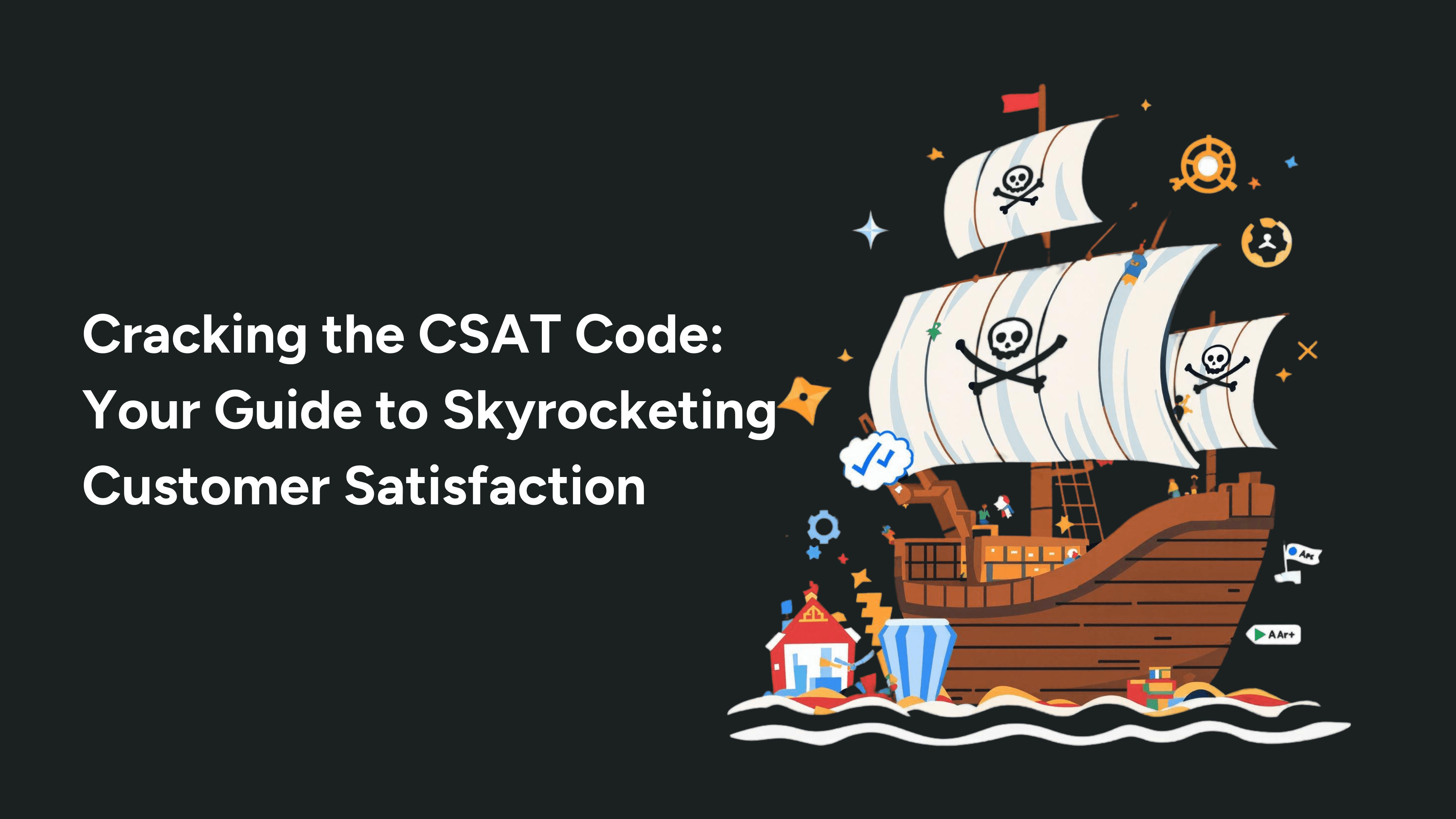This comprehensive guide explores the Customer Satisfaction Score (CSAT), a critical metric for understanding and improving customer experiences. By breaking down the calculation method, providing industry benchmarks, and offering actionable strategies, the guide equips businesses with the knowledge to enhance customer satisfaction. From understanding the importance of CSAT to avoiding common pitfalls, this resource offers a strategic approach to measuring, analyzing, and improving customer interactions across various touchpoints.
In today's hyper-competitive field, delivering good customer experiences is no longer a luxury—it's a need. And how do you gauge the pulse of your customer's happiness? Learn the Customer Satisfaction Score (CSAT).
Think of CSAT as a report card for your business. It tells you how well you're meeting customer expectations at specific touchpoints. In this comprehensive guide, we'll delve into the what, why, and how of CSAT, equipping you with the knowledge to not just understand this crucial metric, but to leverage it for sustainable business growth.
What is CSAT and Why Should You Care?
At its core, CSAT measures how satisfied a customer is with a particular interaction, product, or service. It's typically measured using a simple survey question, like:
"How satisfied were you with your recent purchase?"
"How would you rate your experience with our customer support team?"

Key Benefits of CSAT
A snapshot of satisfaction: CSAT provides immediate feedback on specific customer interactions.
Identifies areas for improvement: Low CSAT scores pinpoint pain points in your customer journey.
Drives customer retention: Happy customers are more likely to return for repeat business.
Boosts brand loyalty: Positive experiences lead to positive word-of-mouth marketing.
Example: An online retailer might use CSAT to assess customer satisfaction with their checkout process. A low score could indicate a need to simplify the process or offer more payment options.
Mastering the Art of CSAT Calculation
Calculating your CSAT score is straightforward. The most common method involves using a scale of 1-5, with 5 being "Very Satisfied."
CSAT Score = (Number of Satisfied Customers (4 & 5) / Total Number of Survey Responses) x 100
Key Calculation Insights
Focus on the positives: Only responses of 4 ("Satisfied") and 5 ("Very Satisfied") are factored into the calculation.
Benchmarking is key: Compare your scores to industry averages to gauge your performance.
Example: If you receive 100 survey responses and 75 customers choose 4 or 5, your CSAT score would be 75%.
Decoding Your CSAT Score: What's a Good Score?
While a perfect score of 100% is the ultimate goal, realistically, most businesses strive for a score above 80%.
Industry Insights
According to the American Customer Satisfaction Index (ACSI), the average CSAT score across industries in 2023 was 74.6%.
Research by Qualtrics found that companies with a CSAT score above 75% experience higher customer retention rates and revenue growth.

Key Considerations
Industry benchmarks vary: Compare your scores to those of your direct competitors.
Track your progress over time: Focus on consistent improvement rather than chasing a magic number.
Actionable Strategies to Boost Your CSAT Score
Improving your CSAT score isn't about random acts of improvement—it's about a strategic approach.
Proven Tips to Enhance Customer Satisfaction
Optimize key touchpoints: Identify and improve areas where customer satisfaction is low.
Empower your employees: Provide excellent training and resources to your customer-facing teams.
Close the feedback loop: Follow up with customers who provide negative feedback and address their concerns.
Go above and beyond: Surprise and delight customers with unexpected gestures of appreciation.
Example: A SaaS company with a low CSAT score for their onboarding process could create interactive tutorials, personalized welcome emails, and proactive support to improve the customer experience.
Avoiding Common CSAT Pitfalls
Even with the best intentions, businesses can fall prey to common CSAT mistakes.

Common Mistakes to Watch Out For
Survey fatigue: Avoid overwhelming customers with too many surveys.
Ignoring negative feedback: Address negative comments promptly and constructively.
Failing to act on feedback: Don't just collect data—use it to make meaningful improvements.
Expert Quote: "Customer satisfaction is worthless. Customer loyalty is priceless." - Jeffrey Gitomer, author and sales expert
Conclusion
Mastering CSAT is an ongoing journey, not a destination. By understanding what drives customer satisfaction and consistently implementing improvements based on feedback, you can create a customer-centric culture that translates into increased loyalty, reduced churn, and ultimately, greater business success.
Ready to take your CSAT score to the next level? Start by analyzing your current customer journey, identifying key touchpoints, and crafting targeted surveys to gather actionable insights. Remember, satisfied customers are the foundation of a thriving business!
Related Article



